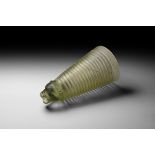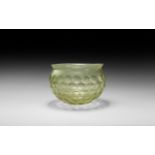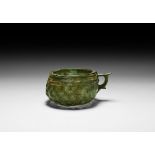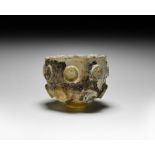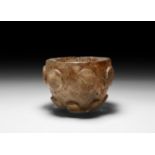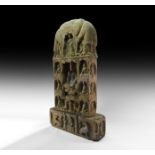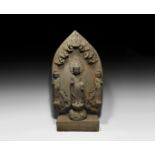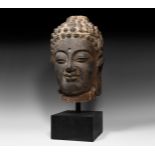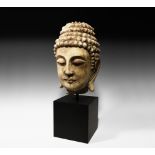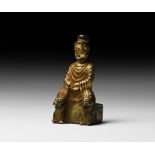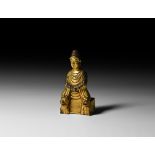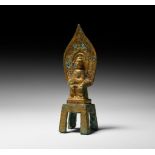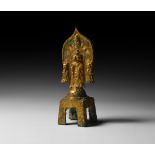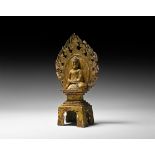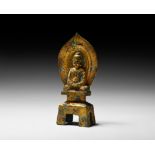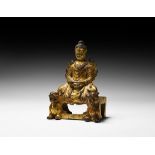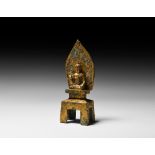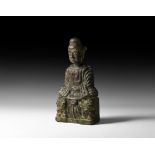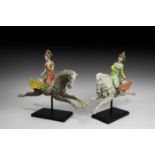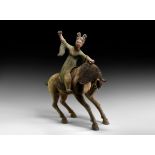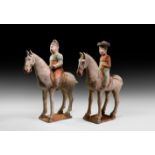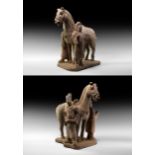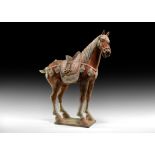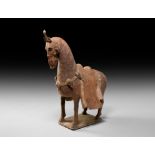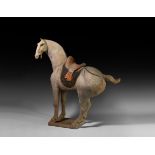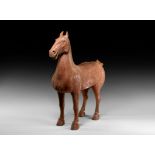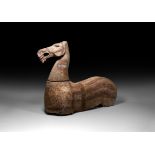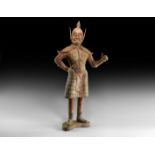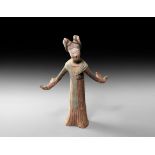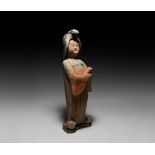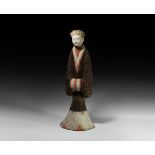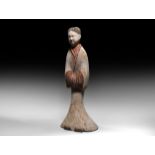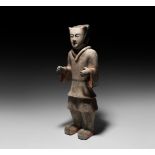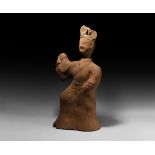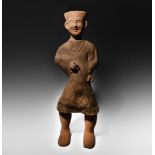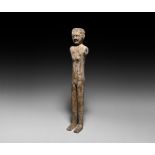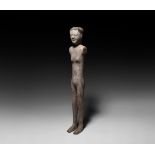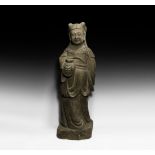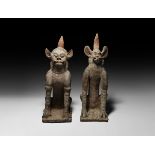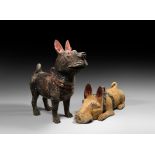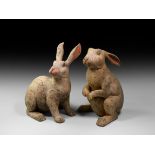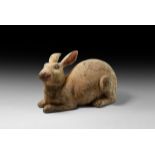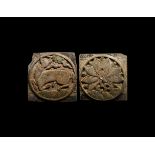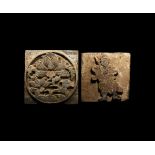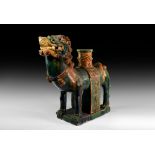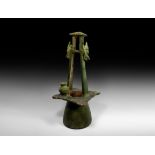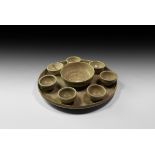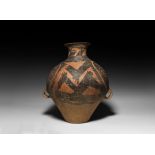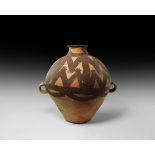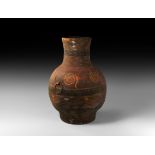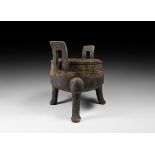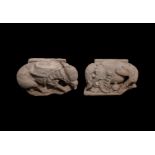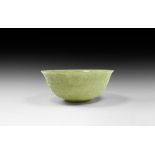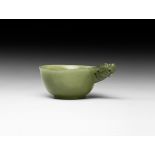Refine your search
Estimate
Category
- Jewellery (132)
- Arms, Armour & Militaria (71)
- Greek, Roman, Egyptian & Other Antiquities (53)
- Chinese Works of Art (52)
- Sculpture (47)
- Collectables (31)
- Metalware (21)
- Ceramics (19)
- Salvage & Architectural Antiques (18)
- Taxidermy & Natural History (17)
- Books & Periodicals (14)
- Coins (14)
- Glassware (12)
- Furniture (9)
- Islamic Works of Art (7)
- Vintage Fashion (6)
- Sporting Memorabilia & Equipment (5)
- Textiles (5)
- Indian Works of Art (4)
- Lighting (4)
- Scientific Instruments (4)
- Musical Instruments & Memorabilia (3)
- Classic Cars, Motorcycles & Automobilia (2)
- Models, Toys, Dolls & Games (2)
- Silver & Silver-plated items (2)
- Ethnographica & Tribal Art (1)
- Prints (1)
- Russian Works of Art (1)
- Stamps (1)
Filtered by:
- Lots with images only,
- Item Type
- List
- Grid
A subscription to the Price Guide is required to view results for auctions ten days or older. Click here for more information
1st millennium AD. A restrung carnelian necklace comprising graduated axehead-shaped pendants interspersed with biconical and small oblate beads; ...
4th millennium BC. A restrung string of irregular rock crystal beads with a large central tabular bead drilled from both directions and polished; ...
1st millennium AD and later. A group of thirteen biconical carnelian and agate beads with etched white net-decoration. 27 grams total, 11-24mm (1...
5th-4th century BC. A spectacular pale-green aqua glass lion-headed beaker or rhyton of exceptional quality, with chamfered rim and conical body w...
3rd-7th century AD. A squat pale green glass cup with rounded base and everted rim, seven bands of wheel-cut facets to the outer face. Cf. Whiteho...
3rd-7th century AD. A squat green glass cup with dimple base and everted rim, bands of wheel-cut facets to the outer face, loop handle with thumb-...
6th-7th century AD. A cut glass cup with button base and two rows of scooped button ornaments to the sidewall. Cf. similar item in the Corning Mus...
6th-7th century AD. A substantial cut aqua glass bowl with ring of seven large disc studs below the rim and seven smaller beneath, disc base. Cf. ...
Northern Qi Dynasty, 5th-6th century AD. An imposing carved fossiliferous limestone stele surmounted by four entwined grimacing dragons, their bod...
Eastern Wei, 6th century AD. A carved sandstone architectural panel comprising an aureole with flying deva figures to the upper edge, central stan...
Tang Dynasty, 618-906 AD. A large cast iron head of Buddha with segmented head of curled hair, scooped ears with extended lobes, recess to the bro...
Tang Dynasty, 618-906 AD. A carved marble head of Buddha with hair composed of tight coils, finely carved facial details, serene expression; mount...
Eastern Wei, early 5th century AD. A bronze figure, likely in the style of the Gandharan or Uddiyana regions, of Shakyamuni Buddha in loose robes ...
Northern Wei Dynasty, 386-534 AD. A gilt bronze figure, after the statuary of Gandhara or neighbouring region of Uddiyana, of Shakyamuni Buddha mo...
Northern Wei Dynasty, 386-534 AD. A gilt-bronze figure after the Gandharan style, or that of the neighbouring Uddiyana region, of Shakyamuni Buddh...
Northern Wei Dynasty, 386-534 AD. A gilt-bronze figure, influenced by the Gandharan style or that of the neighbouring region of Uddiyana, of Shaky...
Later Yan Dynasty, 384-407 AD. A gilt-bronze statuette, with Gandharan stylistic influence, featuring Buddha standing against an aureole and lotus...
Northern Wei Dynasty, 386-534 AD. A gilt-bronze figure, influenced by the Gandharan style or that of the neighbouring Uddiyana region, of Shakyamu...
Western Qin Dynasty, 385-431 AD. A gilt-bronze statuette, influenced by the Gandharan style or that of the neighbouring Uddiyana region, of Shakya...
Eastern Wei, early 5th century AD. A gilt-bronze figure, composition originating in the Gandharan style and displaying Central Asian features, of ...
Tang Dynasty, 829 AD. A gilt-bronze figure, influenced by the Gandharan style, of Buddha sitting on raised rectangular podium resting on a four-le...
Eastern Wei, early 5th century AD. A hollow-formed bronze statuette, likely after the Gandharan or Uddiyana style, of Shakyamuni Buddha sitting in...
Tang Dynasty, 618-906 AD. A substantial pair of ceramic figurines each depicting a female polo player with piled hairstyle, tight-fitting knee-len...
Chinese Tang Lady on Horseback
Tang Dynasty, 618-906 AD. A ceramic figurine of a horse and rider; the horse shown with head lowered in a vigorous bucking pose, the knotted tail ...
Tang Dynasty, 618-906 AD. A group of two ceramic figurines comprising: a merchant in long-sleeved robe wearing a hat with gusseted brim, sitting a...
Song Dynasty, 960-1127 AD. A ceramic diorama on an irregular base comprising: a standing horse with saddle, bridle and harness flanked by a standi...
Large Chinese Tang Horse Figure
Tang Dynasty, 618-906 AD. A large ceramic figure of a standing horse on a rectangular base, with integral saddle, bridle and harness; the horse wi...
Chinese Wei Caparisoned Horse
Northern Wei Dynasty, 386-534 AD. A ceramic figure of a horse standing on a rectangular base with elaborate harness and bridle, saddle with segmen...
Large Chinese Han Horse Figurine
Han Dynasty, 206 BC-220 AD. A ceramic model horse standing with head and dressed erect tail, integral saddle and cloth, painted harness detail; ho...
Large Chinese Han Horse Figurine
Han Dynasty, 206 BC-220 AD. A terracotta model of a horse standing with head and dressed tail erect; hollow to the underside. 8.6 kg, 57.5cm heig...
Han Dynasty, 206 BC-220 AD. A hollow-formed ceramic figurine of a horse in two sections, the body with sleek profile and painted harness detailing...
Tang Dynasty, 618-906 AD. A substantial ceramic figure of a guard standing on a crescent base, wearing a domed helmet with spike and lateral flaps...
Tang Dynasty, 618-906 AD. A ceramic figurine of a dancing female with arms flung out to the sides in the traditional dance movement involving long...
Tang Dynasty, 618-906 AD. A hollow-formed ceramic figure of a courtly lady standing wearing floor-length robe with cloud slippers, cradling an inf...
Large Chinese Han Standing Lady
Han Dynasty, 206 BC-220 AD. A hollow-formed ceramic figurine of a courtly lady with trumpet-shaped base, floor-length gown with the hands folded i...
Chinese Han Female Attendant
Han Dynasty, 206 BC-220 AD. A hollow-formed ceramic figure of a standing female attendant in a floor-length robe, her hands enfolded in the volumi...
Chinese Han Standing Figure
Han Dynasty, 206 BC-220 AD. A ceramic standing figure of a guard wearing tunic, trousers and boots with curled toes; the arms bent and hands open ...
Large Chinese Han Standing Lady
Han Dynasty, 206 BC-220 AD. A hollow-formed terracotta figure of a dancing lady in floor-length gown with extended sleeves, diadem of flowers to t...
Late Han Dynasty, 206 BC-220 AD. A large ceramic figure of a standing man wearing a cross-over tunic and a cap; carefully modelled face with parte...
Chinese Han Standing Figure
Han Dynasty, 206 BC-220 AD. An unglazed ceramic figure of a nude male with hair dressed in a top-knot, sockets to the shoulders to accept posable ...
Chinese Han Standing Figure
Han Dynasty, 206 BC-220 AD. An unglazed ceramic figure of a nude male with hair dressed in a top-knot, sockets to the shoulders to accept posable ...
Chinese Ming Female Figure
Ming Dynasty, 1368-1644 AD. A carved stone figure of a lady in floor-length gown with draped folds to the waist and bell-shaped sleeves, collar wi...
Tang Dynasty, 618-906 AD. A mixed pair of ceramic figures, each a crouching mythical creature with human facial features. 8.8 kg total, 42-43cm (...
Chinese Han Dog Figure Pair
Han Dynasty, 206 BC-220 AD. A pair of ceramic dog figures, each wearing a harness and a securing loop, one standing with ears pricked, the other r...
Chinese Han Rabbit Pair
Han Dynasty, 206 BC-220 AD. A pair of ceramic rabbit figures in dynamic poses, each with painted detailing to the eyes, nose and ears. 6.3 kg tot...
Chinese Han Rabbit Figurine
Han Dynasty, 206 BC-220 AD. A ceramic figure of a rabbit with painted detailing to the eyes, nose and ears. 2.8 kg, 28cm (11"). Property of a Nor...
Song Dynasty, 960-1127 AD. A group of two ceramic wall tiles with painted high-relief decoration, one with a flower in the tondo, the other with a...
Song Dynasty, 960-1127 AD. A group of two rectangular ceramic wall tiles, one with a tondo filled with flowers and vegetation, the other with a hi...
Ming Dynasty, 1368-1644 AD. A ceramic figure of a lion on a rectangular base with deep green glaze, chestnut-brown detailing to the mane and tail,...
Chinese Ming Glazed Model Well
Ming Dynasty, 1368-1644 AD. A ceramic model of a well with conical pit, square flange parapet, A-frame superstructure with tiled roof, flanking dr...
Chinese Song Glazed Wine Cup Set
Song Dynasty, 960-1127 AD. A ceramic table set in cream to olive glaze, comprising a shallow footed tray with low rim, central squat bowl with thi...
Majiayao Culture, 3300-2000 BC. A ceramic jar with trumpet mouth, globular body with painted decoration of roundels to the shoulder with net patte...
Majiayao Culture, 3300-2000 BC. A ceramic jar with flaring rim and short neck, globular body with painted decoration of roundels to the shoulder w...
Chinese Han Painted Storage Jar
Han Dynasty, 206 BC-220 AD. A ceramic jar with bulbous body and flat base, slightly waited neck, integral moulded suspension rings to the equator ...
Han Dynasty, 206 BC-220 AD. A ceramic blackware ding ritual vessel with drum-shaped body, three splayed legs, two square handles to the shoulder. ...
Chinese Ming Guardian Pair
Ming Dynasty, 1368-1644 AD. A substantial pair of carved stone guardian figures curled around a barrel-shaped column base; one a stylised elephant...
Chinese Standing Buddha
18th-19th century AD. A serpentine statue of a standing Buddha with a contemplative expression on his skillfully carved face, eyes closed in deep ...
Qianlong Emperor, 1735-1796 AD. A carved translucent jade bowl with basal ring and flared rim, the outer face with four facing figures of Buddha s...
Qianlong Period, 18th century AD. A carved translucent jade cup with pierced handle formed as the head of a dragon. 64 grams, 84mm (3 1/4"). From ...
19th-20th century AD. A sheet-gold mask to cover the actor's identity while leaving his mouth visible; prominent openwork monobrow and almond-shap...





